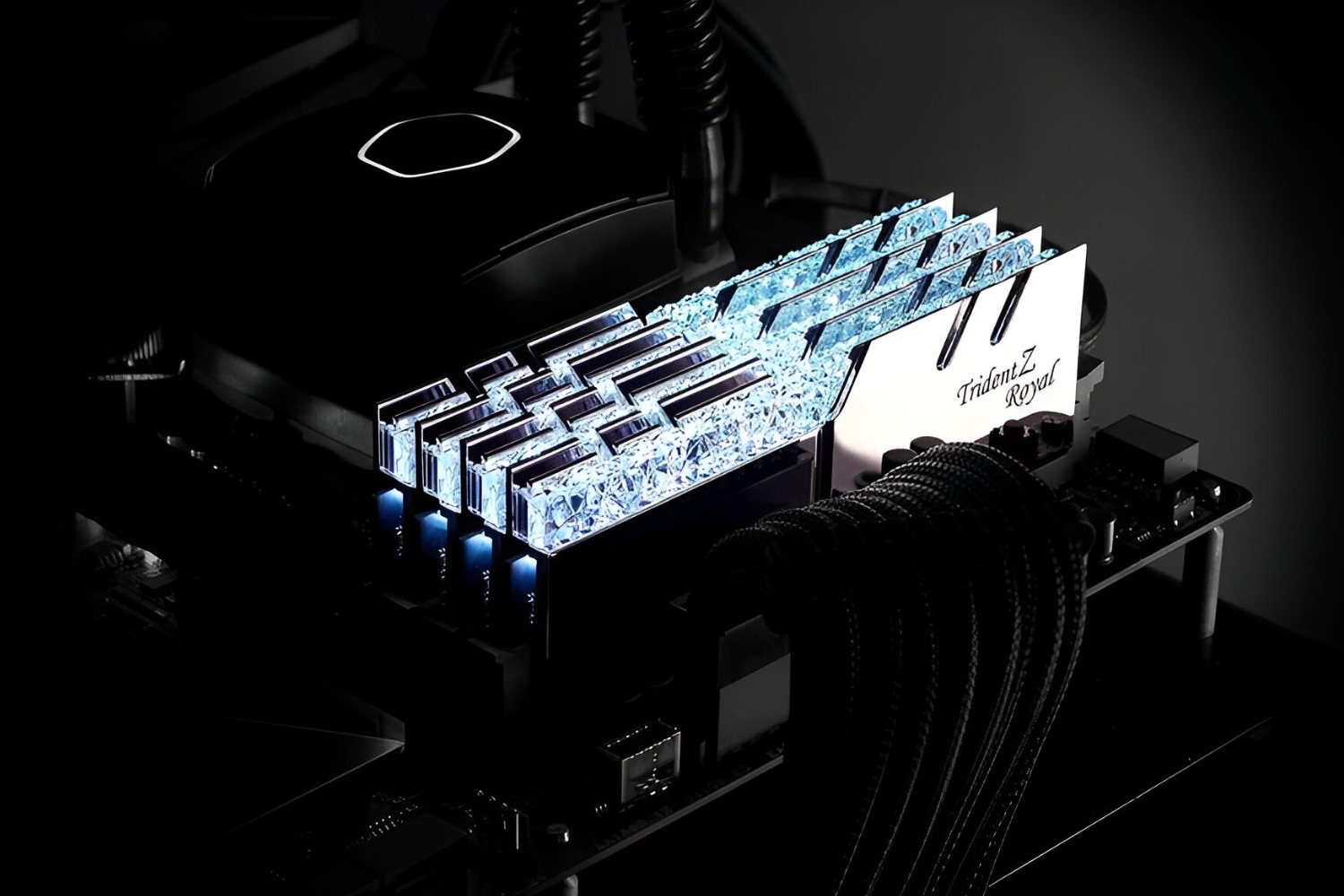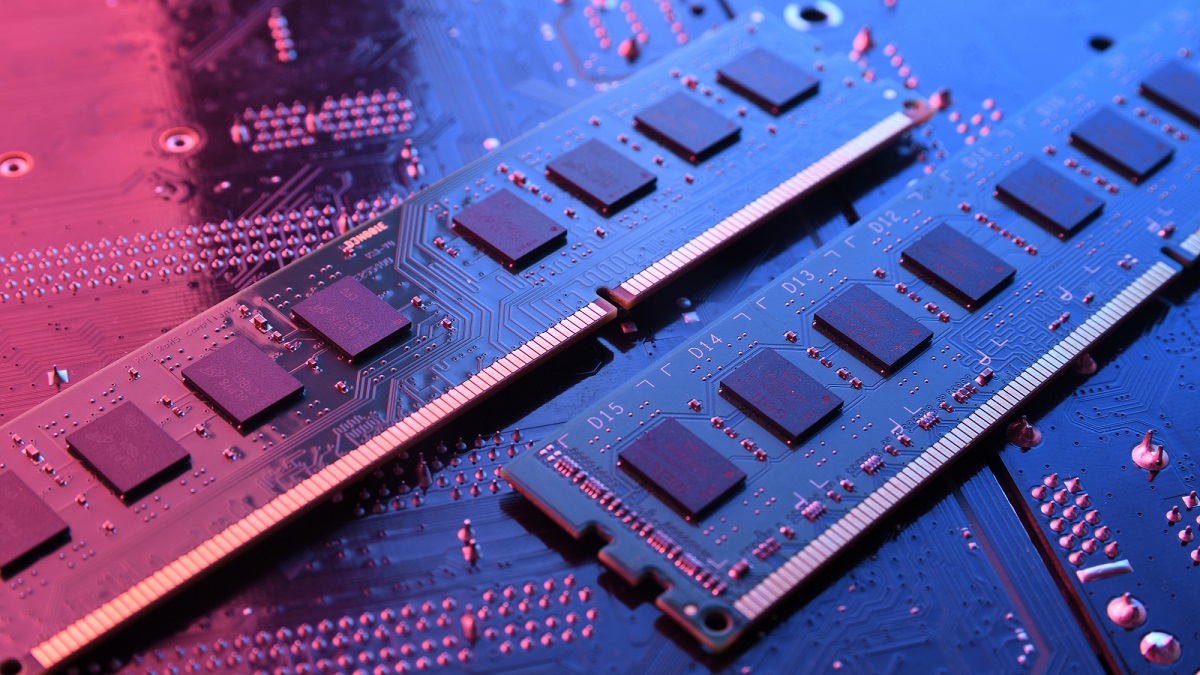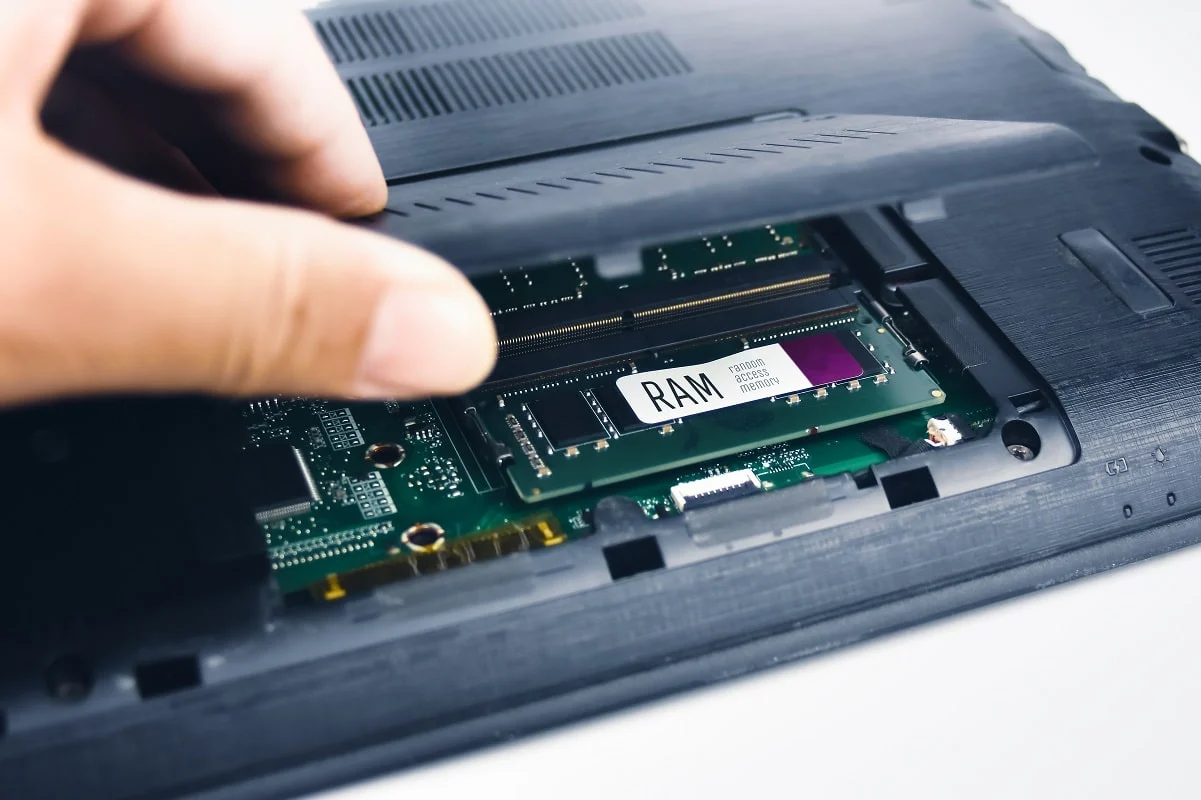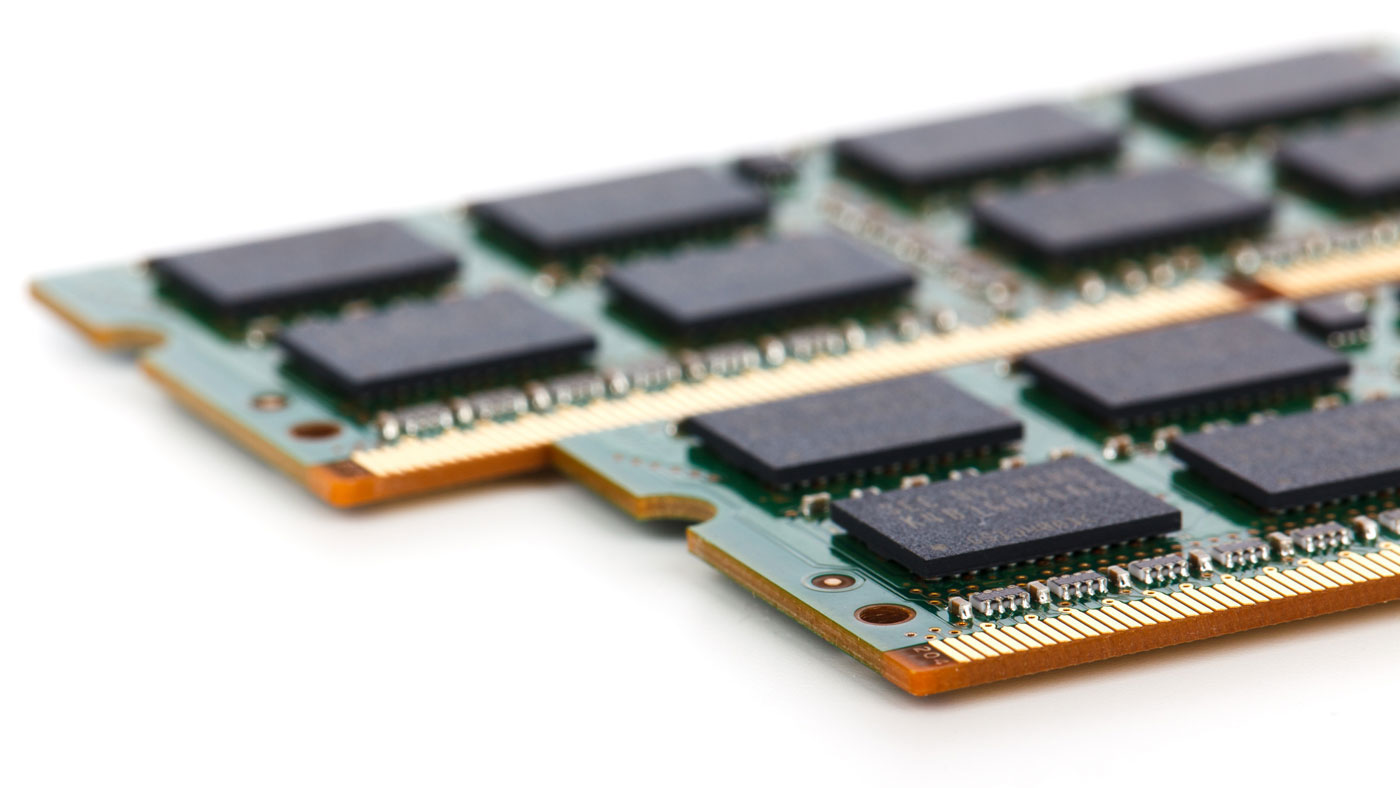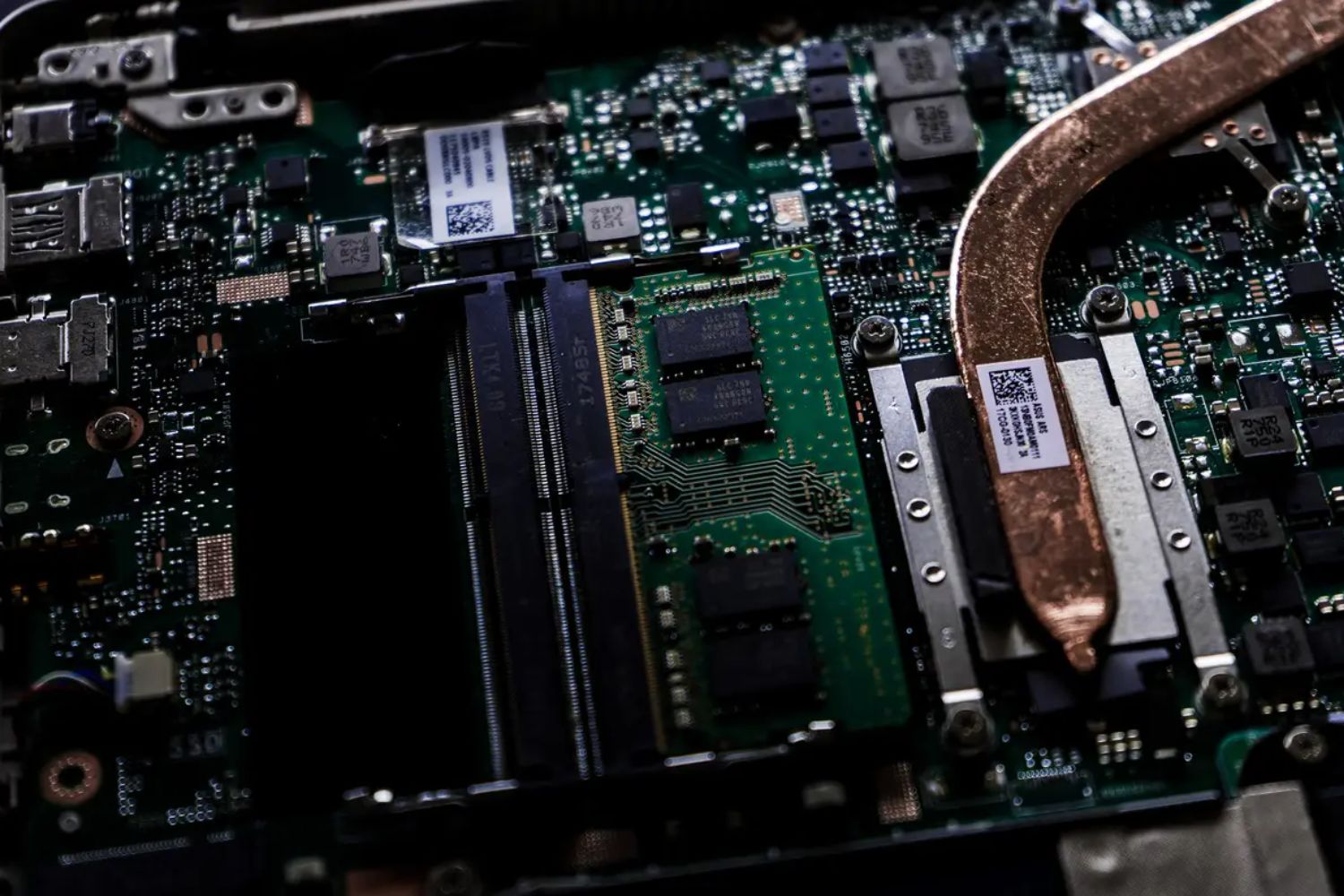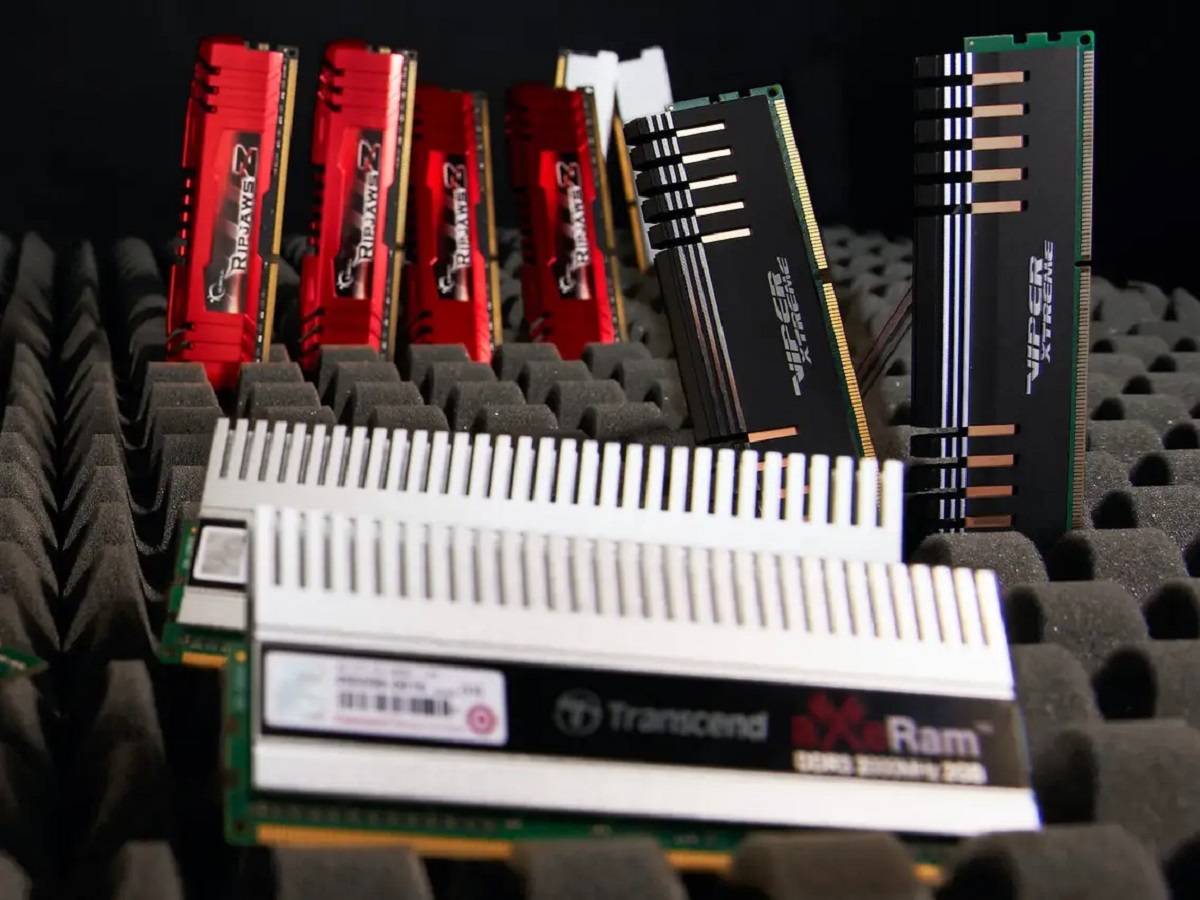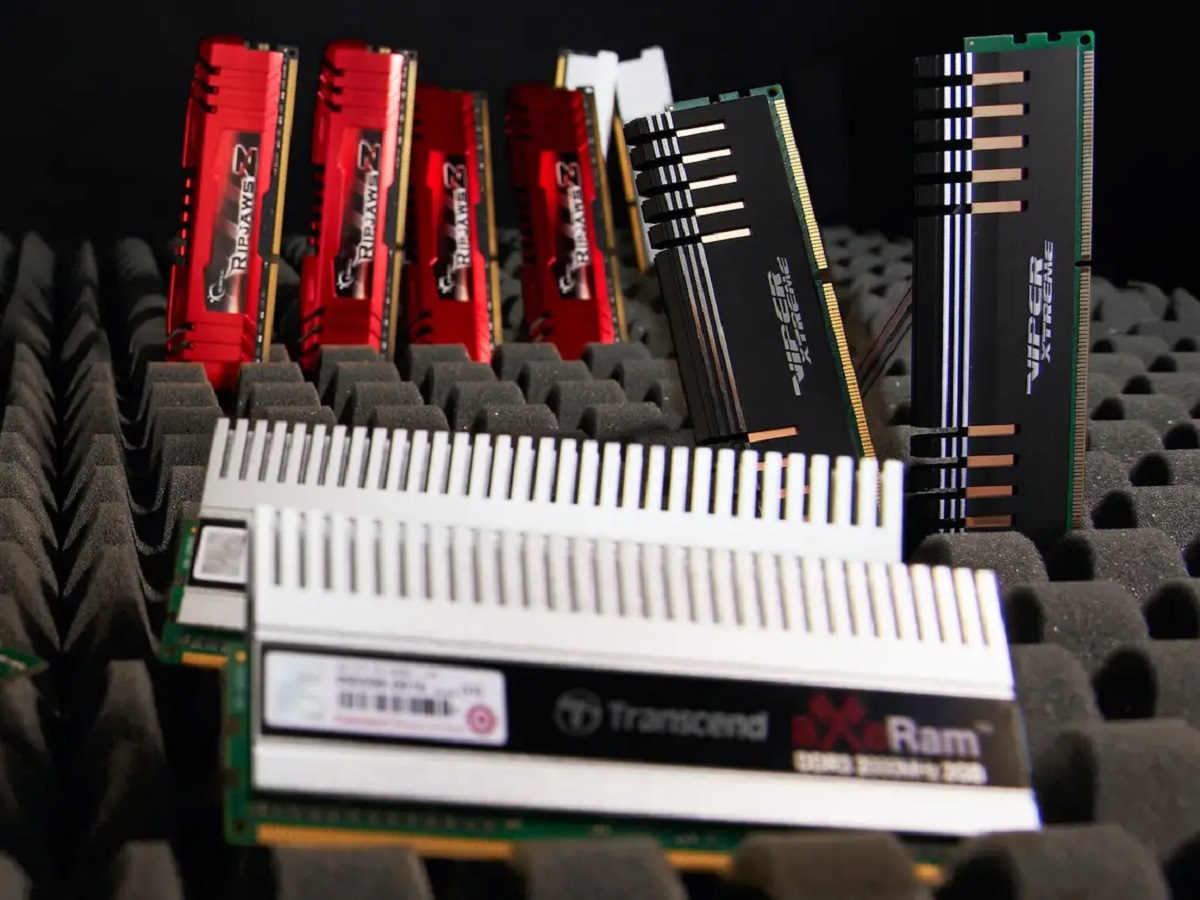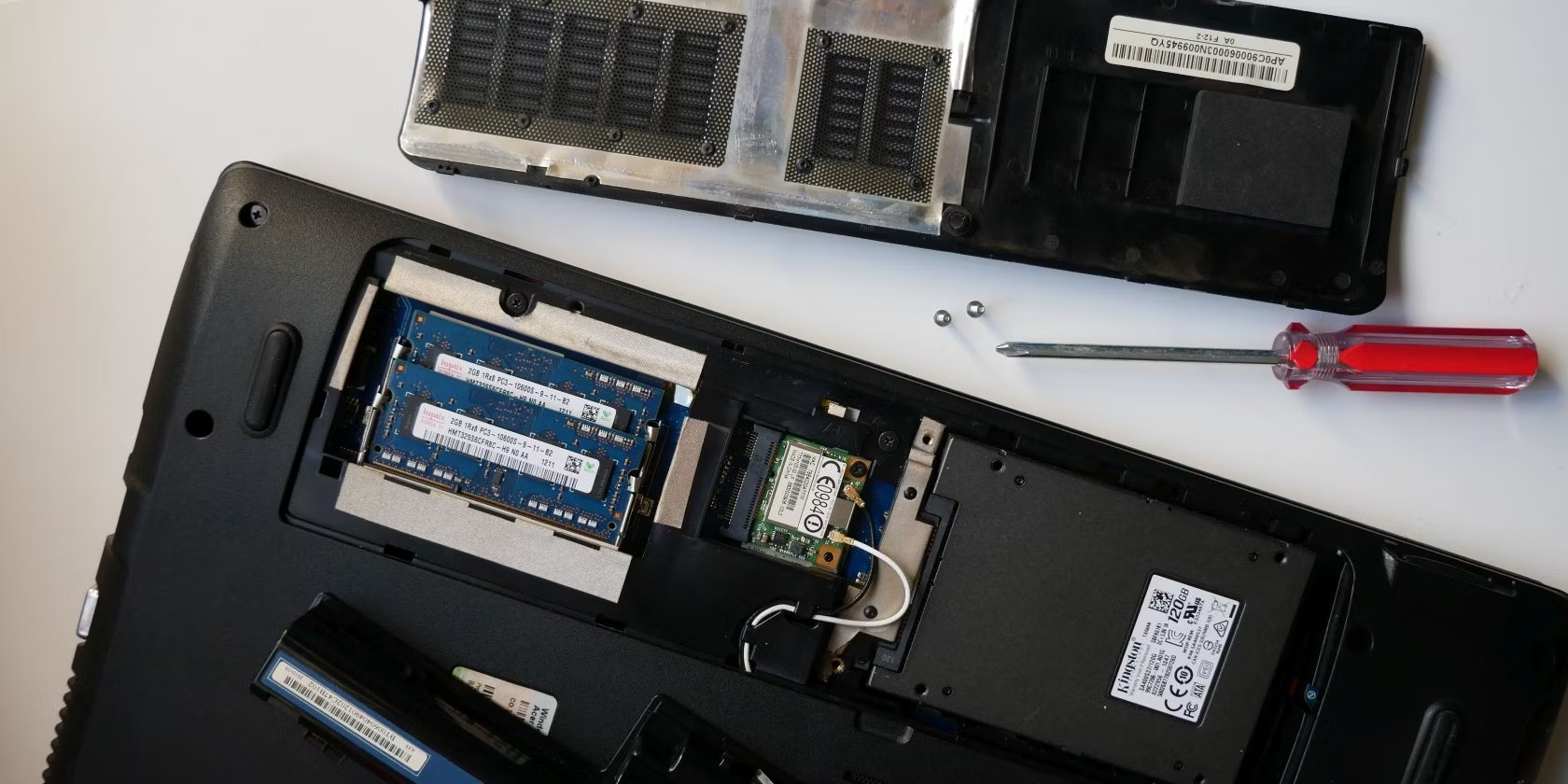Introduction
When it comes to video editing, having the right hardware is essential to ensure smooth and efficient performance. One crucial component that significantly impacts the editing process is Random Access Memory (RAM). RAM acts as a temporary storage space for the data and applications that your computer is actively using. As video editing involves working with large files and resource-intensive tasks, having an adequate amount of RAM is vital for a seamless editing experience.
RAM plays a crucial role in video editing by allowing your computer to quickly access and manipulate data. It enables you to work on multiple layers, apply complex effects, and preview your edits in real-time. Insufficient RAM can lead to slow rendering times, laggy playback, and overall sluggishness in your editing software. Therefore, it is vital to have the right amount of RAM to ensure that your computer can handle the demands of video editing software.
In this article, we will discuss how much RAM is recommended for video editing. We will explore the minimum requirements for video editing, as well as the ideal amount of RAM to achieve optimal performance. Additionally, we will cover the factors you should consider when choosing RAM for video editing and provide steps on how to check and upgrade your computer’s RAM if needed.
What is RAM?
Before diving into the importance of RAM for video editing, let’s first understand what RAM actually is. RAM, or Random Access Memory, is a type of computer memory that is used to store data that is being actively used by the computer’s processor. Unlike permanent storage devices like hard drives or solid-state drives, RAM provides temporary storage that allows for quick access to data and applications.
When you open a program or a file on your computer, it gets loaded into RAM, allowing the processor to quickly access and retrieve the necessary data. Think of RAM as a workspace where your computer’s processor can easily grab and manipulate data to perform tasks. The more RAM your computer has, the more data it can store in this temporary workspace, resulting in faster and more efficient processing.
In the context of video editing, RAM plays a crucial role in ensuring a smooth editing experience. Video editing software requires a significant amount of memory to handle the large video files, render complex effects, and perform real-time playback. Having a sufficient amount of RAM helps in reducing bottlenecks and allows your computer to handle multiple tasks simultaneously.
To put it simply, RAM acts as a bridge between your computer’s processor and the data it needs to work with. It provides a fast and temporary storage space that enables efficient data processing, making it an essential component for any demanding task, including video editing.
Why is RAM important for video editing?
RAM, or Random Access Memory, plays a pivotal role in the video editing process. Video editing involves working with large files, applying complex effects, and rendering high-resolution footage. All these tasks require significant amounts of memory to handle the data efficiently. Here are some reasons why RAM is crucial for video editing:
- Smooth Playback and Real-Time Editing: Video editing software relies heavily on RAM to ensure smooth playback and real-time editing. With an adequate amount of RAM, your computer can store and process the necessary data, allowing you to view your edits in real-time without any lag or stuttering.
- Efficient Rendering Times: Rendering is a resource-intensive task that converts your project into a finalized video. Sufficient RAM enables faster rendering times by allowing the software to store and access the necessary data during the rendering process. This reduces the time required for your edits to be processed and exported as a final product.
- Handling Multiple Layers and Effects: Video editing often involves working with multiple layers, applying effects, and adjusting various parameters. RAM allows the software to keep all these elements in memory, ensuring smooth workflow and minimizing delays when working on complex projects.
- Preventing Bottlenecks: Inadequate RAM can lead to performance bottlenecks, where your computer struggles to handle the demands of the editing software. This can result in slow processing speed, laggy playback, and increased rendering times. Sufficient RAM helps prevent these bottlenecks, ensuring that your editing software can perform at its best.
- Multi-Tasking Capability: Video editing often involves running multiple applications simultaneously, such as video editing software, graphic design tools, music libraries, and more. Having enough RAM allows your computer to handle these tasks efficiently, reducing overall system slowdowns and improving productivity.
In essence, RAM is critical for video editing because it allows your computer to store and access the data required for editing tasks. It provides the necessary memory and processing power to handle large files, complex effects, and real-time editing, ultimately enhancing your overall editing experience and workflow efficiency.
Minimum RAM requirements for video editing
When it comes to video editing, having an adequate amount of RAM is crucial to ensure smooth and efficient performance. While the exact minimum RAM requirements can vary depending on the specific video editing software and the complexity of your projects, here are some general recommendations:
- 4GB RAM: This is typically the bare minimum requirement for basic video editing. It may be suitable for simple editing tasks, such as trimming, basic transitions, and minor effects, as long as you are working with small or low-resolution video files.
- 8GB RAM: Having 8GB of RAM is recommended for more demanding video editing tasks. It allows for smoother playback, faster rendering, and the ability to handle moderate-sized video files. This amount of RAM is suitable for most casual or hobbyist video editors.
- 16GB RAM: If you are a serious video editor or working with high-resolution footage, having 16GB of RAM will significantly improve your editing experience. It provides ample memory to handle more complex projects, multiple layers, advanced effects, and faster rendering times. It is also beneficial for multitasking and running other resource-intensive applications alongside your video editing software.
- 32GB RAM and above: For professional video editors, handling large projects, working with 4K or higher resolution footage, or utilizing software with extensive effects and plugins, 32GB or more RAM is recommended. This ensures optimal performance, smooth playback, and faster rendering times, even with the most demanding editing tasks.
It’s important to note that these are general recommendations, and the specific RAM requirements may vary depending on your specific needs and the software you are using. It’s always a good idea to check the official documentation or the system requirements provided by the video editing software manufacturer for their recommended RAM specifications.
Remember, having more RAM allows your computer to handle the demands of video editing more efficiently. Investing in a higher amount of RAM can result in improved workflows, reduced rendering times, and an overall smoother editing experience.
Recommended RAM for video editing
When it comes to video editing, having sufficient RAM is crucial to ensure smooth and efficient performance. While the minimum RAM requirements can serve as a starting point, the recommended amount of RAM will depend on the complexity of your projects and your specific needs. Here are some recommendations for the ideal amount of RAM for video editing:
- 8GB to 16GB RAM: For most video editing tasks, having 8GB to 16GB of RAM is recommended. This range provides enough memory to handle moderate-sized video files, apply basic effects, and work with multiple layers. It ensures smoother playback, faster rendering times, and an overall improved editing experience.
- 32GB RAM: If you frequently work with high-resolution footage or complex projects, 32GB of RAM is highly recommended. This amount of RAM allows for seamless performance when working with 4K or higher resolution videos and incorporating advanced effects. It also enables smooth multitasking, such as running other resource-intensive applications alongside your video editing software.
- 64GB or more RAM: For professional video editors or those working with highly demanding projects, 64GB or more RAM is ideal. This substantial amount of memory ensures optimal performance when dealing with large files, extensive effects, and intricate editing tasks. It provides a significant boost in rendering times, real-time playback, and overall efficiency.
It’s important to note that while more RAM can improve performance, it also depends on other factors such as the capabilities of your computer’s processor and graphics card. To determine the ideal amount of RAM for your specific needs, consider the complexity of your projects, the size of video files you typically work with, the effects you apply, and any third-party plugins or software you use alongside your editing program.
Keep in mind that as technology advances and video editing software becomes more resource-intensive, your RAM requirements may increase. Therefore, it’s always a good idea to leave room for future growth and consider investing in higher amounts of RAM if you plan on tackling more demanding projects or working with higher resolution footage.
Ultimately, having the recommended amount of RAM for video editing ensures optimal performance, smoother workflows, faster rendering times, and an overall more enjoyable editing experience.
Factors to consider when choosing RAM for video editing
When choosing RAM for video editing, it’s important to consider several factors to ensure optimal performance and compatibility with your system. Here are some key factors to keep in mind:
- Capacity: The capacity of the RAM module determines how much data it can store at once. Consider the size and complexity of your video editing projects when deciding on the capacity of RAM. While 8GB to 16GB is suitable for most users, professional editors or those working with high-resolution footage may benefit from 32GB or more.
- Speed: The speed of RAM modules is measured in megahertz (MHz) and indicates how quickly data can be accessed and transferred. Higher MHz values result in faster performance. It’s recommended to choose RAM with higher clock speeds to ensure snappy responsiveness and smooth processing when working on resource-intensive tasks.
- Type of RAM: DDR4 (Double Data Rate 4) RAM is the most common and widely supported type of RAM available today. Ensure that the RAM you choose is compatible with your motherboard’s specifications. Check your motherboard’s manual or manufacturer’s website to determine which type and generation of RAM it supports.
- Number of RAM Slots: Consider the number of available RAM slots on your motherboard. This will determine how many RAM modules you can install. If possible, choose RAM modules with lower capacity but higher overall capacity, allowing for future expansion if needed.
- Compatibility: Verify that the RAM you choose is compatible with your computer’s specifications. Consider factors such as the voltage requirements, form factor, and memory timing. Consult your computer’s manual or manufacturer’s website for specific compatibility information.
- Budget: RAM prices can vary depending on the capacity and speed. Determine your budget and prioritize the factors mentioned above based on your specific needs and available resources. Assess your requirements and strike a balance between performance and affordability.
Additionally, consider researching and reading reviews from reputable sources to gain insights into the reliability and performance of different RAM modules. This will help ensure you make an informed decision when choosing RAM for video editing.
Remember, investing in high-quality, compatible RAM modules that meet your specific video editing requirements will result in improved performance, smoother workflows, and a more enjoyable editing experience.
How to check your computer’s RAM
Checking your computer’s RAM is a straightforward process that can be done through various methods. Here are a few ways to check the amount of RAM installed in your computer:
- Check Task Manager (Windows): On Windows, you can use the built-in Task Manager to view your computer’s RAM usage. To access Task Manager, right-click on the taskbar and select “Task Manager” from the menu. In the “Performance” tab, you will find detailed information about your computer’s memory usage, including the amount of RAM installed.
- About This Mac (MacOS): If you’re using a Mac, you can find information about your computer’s RAM through the “About This Mac” option. Click on the Apple menu in the top-left corner of your screen and select “About This Mac.” In the window that appears, click on the “Memory” tab to view the details of your computer’s RAM.
- System Information (Windows and MacOS): Both Windows and MacOS provide a system information tool that offers comprehensive hardware details, including RAM. On Windows, you can search for “System Information” in the Start menu or use the “msinfo32” command in the Run dialog box. On MacOS, you can access it through “Applications” > “Utilities” > “System Information.”
- BIOS/UEFI Settings: Another way to check your computer’s RAM is by accessing the BIOS (Basic Input/Output System) or UEFI (Unified Extensible Firmware Interface) settings. Restart your computer and enter the BIOS or UEFI settings by pressing the appropriate key during startup (usually displayed on the screen). Within the settings, look for a section that provides information about your installed RAM.
These methods should give you an accurate overview of the amount of RAM installed in your computer. It’s worth noting that the information displayed may include the total installed RAM as well as any additional system memory allocated for integrated graphics or other purposes.
In addition to checking the amount of RAM, it’s important to verify the RAM type and speed configured in your system. The system information tools mentioned above should provide these details, allowing you to ensure compatibility when upgrading or purchasing new RAM modules.
By checking your computer’s RAM, you can determine the current configuration and assess whether an upgrade may be necessary to meet the demands of video editing and other resource-intensive tasks.
How to upgrade your computer’s RAM for video editing
If you find that your computer’s RAM is insufficient for video editing and you’re experiencing performance issues, upgrading your RAM can significantly improve your editing experience. Here’s a step-by-step guide on how to upgrade your computer’s RAM:
- Check compatibility: Before purchasing new RAM modules, ensure compatibility with your computer’s specifications. Consider factors such as capacity, speed, and type of RAM (e.g., DDR4). Consult your computer’s manual or manufacturer’s website for specific compatibility information.
- Power off and unplug: Power off your computer and unplug it from the power source. This is essential to prevent any damage during the installation process.
- Open the case: Depending on your computer’s model, you may need to remove screws or use a latch to open the case. Refer to your computer’s manual or manufacturer’s instructions for guidance on how to access the RAM slots.
- Locate the RAM slots: Once the case is open, locate the RAM slots on your computer’s motherboard. They are usually long, narrow slots with small tabs on each end to secure the RAM modules in place.
- Remove existing RAM modules (if applicable): If there are already RAM modules installed in some or all of the slots, gently push apart the tabs on each end to release the RAM. Carefully remove them from the slots. Skip this step if your computer has empty RAM slots.
- Insert the new RAM modules: Take your new RAM modules and align the notch on the bottom edge with the notch in the RAM slot. Gently push the RAM down into the slot until you hear a click, indicating that it has been securely inserted.
- Secure the RAM: Once the new RAM modules are properly inserted, push them down firmly until the tabs on each side click into place, securing the RAM in the slots.
- Close the case: Carefully close the computer’s case and secure it with screws or a latch, following the instructions provided by the manufacturer.
- Power on and verify: Plug in your computer and power it on. Verify that the new RAM modules are detected and functioning correctly by checking the system information or BIOS settings.
- Install and update drivers (if necessary): In some cases, you may need to install or update drivers for the new RAM to work properly. Visit the manufacturer’s website to download and install any required drivers.
Upgrading your computer’s RAM can greatly enhance the performance and efficiency of your video editing tasks. However, if you’re not comfortable performing the upgrade yourself, it’s recommended to seek assistance from a knowledgeable technician or computer professional to ensure the process is done correctly.
Remember to consider the video editing software’s recommended RAM specifications and your specific needs when deciding on the capacity of the new RAM modules. With the upgraded RAM, you should experience smoother playback, faster rendering times, and an overall improved video editing experience.
Conclusion
RAM plays a crucial role in the video editing process, and having the right amount of RAM is essential for optimal performance. Adequate RAM ensures seamless playback, faster rendering times, and the ability to handle complex video editing tasks. While the specific RAM requirements may vary depending on the software and the complexity of your projects, it’s generally recommended to have at least 8GB to 16GB of RAM, with 32GB or more being ideal for professionals or those working with high-resolution footage.
When choosing RAM for video editing, consider factors such as capacity, speed, compatibility, and budget. Checking your computer’s RAM is a straightforward process, and understanding the current configuration will help you determine if an upgrade is necessary. Upgrading your computer’s RAM for video editing requires careful consideration and following the proper installation steps to ensure compatibility and functionality.
Investing in the right amount and type of RAM is a worthwhile investment for video editors. With sufficient RAM, you can expect smoother workflows, faster rendering times, and an overall enhanced editing experience. It allows you to take full advantage of the capabilities of your video editing software and handle resource-intensive tasks with ease.
Remember to assess your specific video editing needs, check software recommendations, and consult your computer’s manual or manufacturer’s website for compatibility information when choosing and upgrading your RAM. By making the right decisions and upgrading your computer’s RAM, you’ll be equipped to tackle even the most demanding video editing projects with efficiency and ease.







